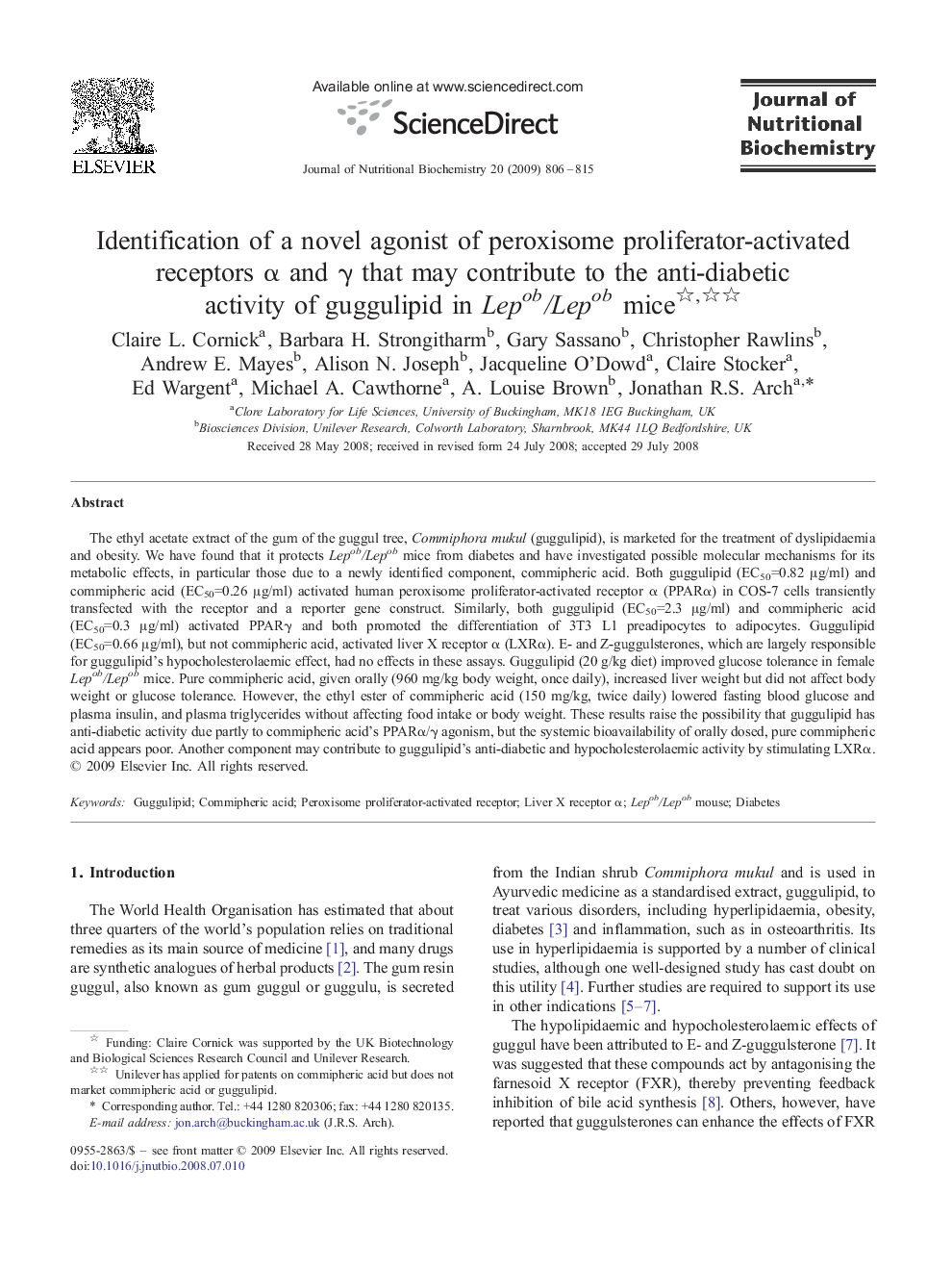| Article ID | Journal | Published Year | Pages | File Type |
|---|---|---|---|---|
| 1990143 | The Journal of Nutritional Biochemistry | 2009 | 10 Pages |
The ethyl acetate extract of the gum of the guggul tree, Commiphora mukul (guggulipid), is marketed for the treatment of dyslipidaemia and obesity. We have found that it protects Lepob/Lepob mice from diabetes and have investigated possible molecular mechanisms for its metabolic effects, in particular those due to a newly identified component, commipheric acid. Both guggulipid (EC50=0.82 μg/ml) and commipheric acid (EC50=0.26 μg/ml) activated human peroxisome proliferator-activated receptor α (PPARα) in COS-7 cells transiently transfected with the receptor and a reporter gene construct. Similarly, both guggulipid (EC50=2.3 μg/ml) and commipheric acid (EC50=0.3 μg/ml) activated PPARγ and both promoted the differentiation of 3T3 L1 preadipocytes to adipocytes. Guggulipid (EC50=0.66 μg/ml), but not commipheric acid, activated liver X receptor α (LXRα). E- and Z-guggulsterones, which are largely responsible for guggulipid's hypocholesterolaemic effect, had no effects in these assays. Guggulipid (20 g/kg diet) improved glucose tolerance in female Lepob/Lepob mice. Pure commipheric acid, given orally (960 mg/kg body weight, once daily), increased liver weight but did not affect body weight or glucose tolerance. However, the ethyl ester of commipheric acid (150 mg/kg, twice daily) lowered fasting blood glucose and plasma insulin, and plasma triglycerides without affecting food intake or body weight. These results raise the possibility that guggulipid has anti-diabetic activity due partly to commipheric acid's PPARα/γ agonism, but the systemic bioavailability of orally dosed, pure commipheric acid appears poor. Another component may contribute to guggulipid's anti-diabetic and hypocholesterolaemic activity by stimulating LXRα.
